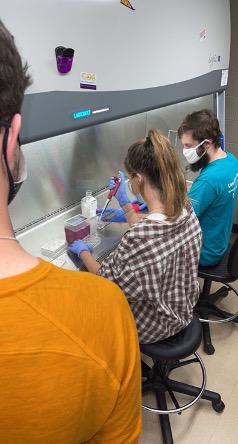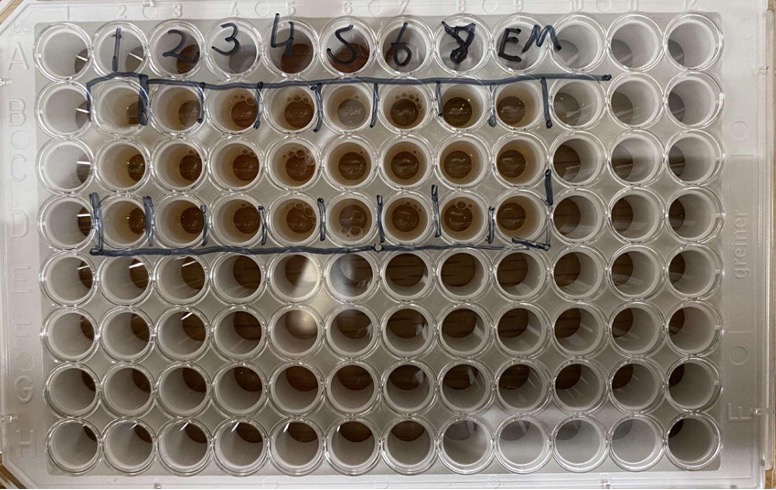November 23, 2021
Aidan Forberg, Lauren Buysse, Eli Landas
Introduction:
After a few trials with the restriction digest we have been able to purify our product and insert it into the pcDNA vector via a ligation and transformation. We were able to find success with our restriction digest when we added a larger amount of our miRNA. Simultaneously we have been able to sequence our miRNA-4786.
Specific Content:
The main focus of the past few weeks has been to perform a luciferase assay which is the final step of our research outside of our poster presentation. A luciferase assay allows us to see whether our miRNA targets the APOBEC3 mRNA or not by using proteins from animals with bioluminescence. By seeing the light levels given off, we are able to tell whether or not we have succeeded.
The process for the assay took 3 labs over 4 days. On the first day we prepared our wells and gathered our cell count and separated them through multiple plates. On the second day we transfected the cells with with our miRNAs and the bioluminescent reporter, and one with just the GFP (green fluorescent protein). Once this step was complete we let our plate sit for over 24 hours. The final step for the lab was to remove the media from all of our plates and gather our measurements from the luminometer.
The final step for our semester is to present our findings to the rest of RISEbio along with the NSF (National Science Foundation) who funds us. We will be making a poster summarizing all of our findings and the steps we took to get there. It will highlight our conclusions and show off how far we came over the semester.
Conclusions/Reflections:
The end goal of this experiment is to have data that can show us if hsa-miR-4314 and hsa-miR-4786-3P are active in the regulation of APOBEC3A and APOBEC3B proteins. Our results were inconclusive as to whether or not the miRNA binded to the 3’ region. The relative luminescence was lower than expected with our pcDNA around 0.93, miRNA 4314 around 0.016, and miRNA 4786-3P around 0.25. This was our first trial and similar to those done before we can predict our results would become more consistent with greater repetition.
After a long journey with our miRNAs we are mostly excited about how far we made it. From COVID-19 to redoing labs over and over, we are proud of the work we have accomplished. We thank the school, the NSF, our peer mentors, and especially Dr. Land for supporting us through our research.



